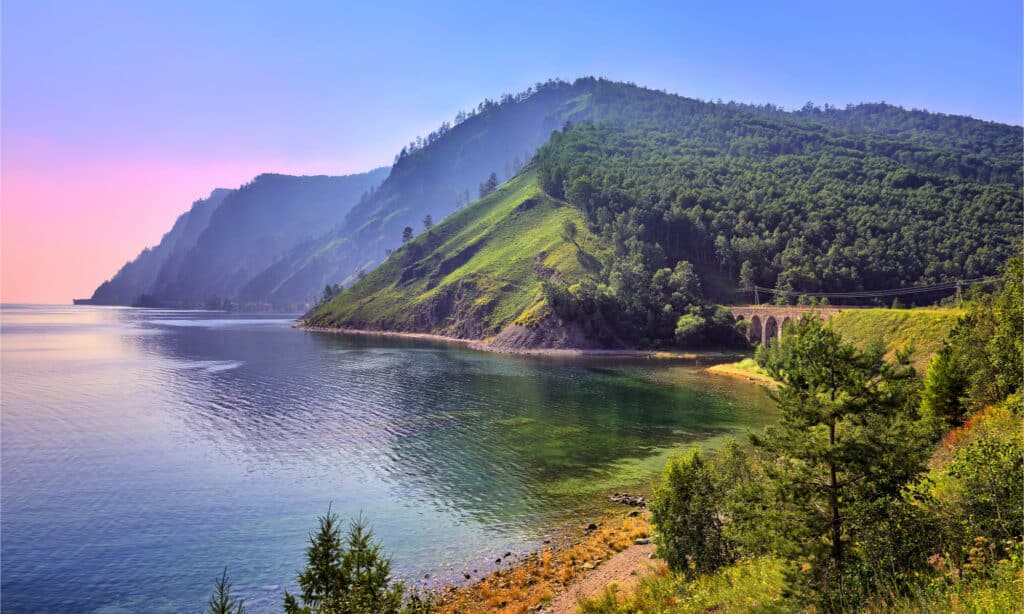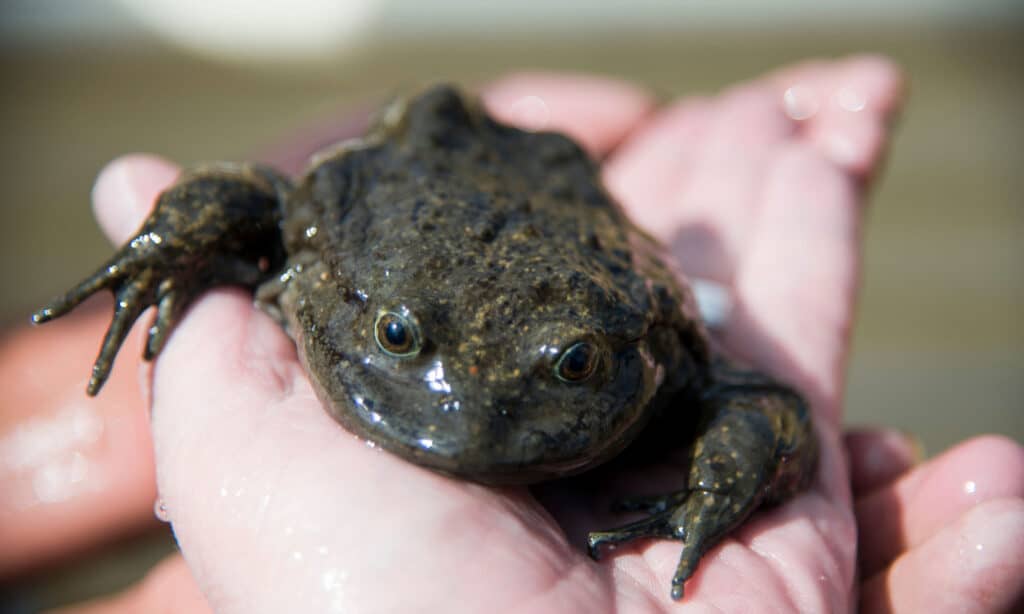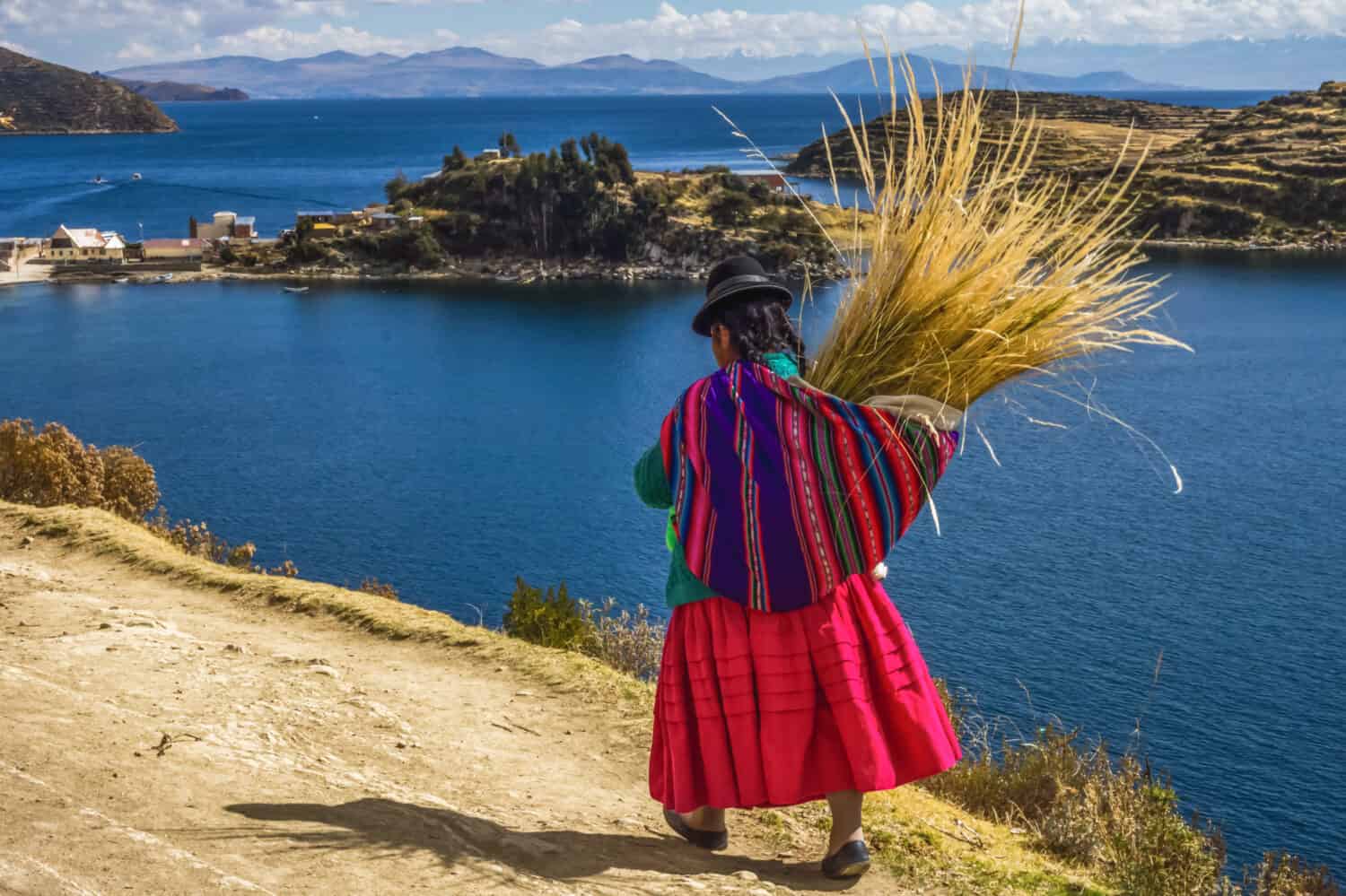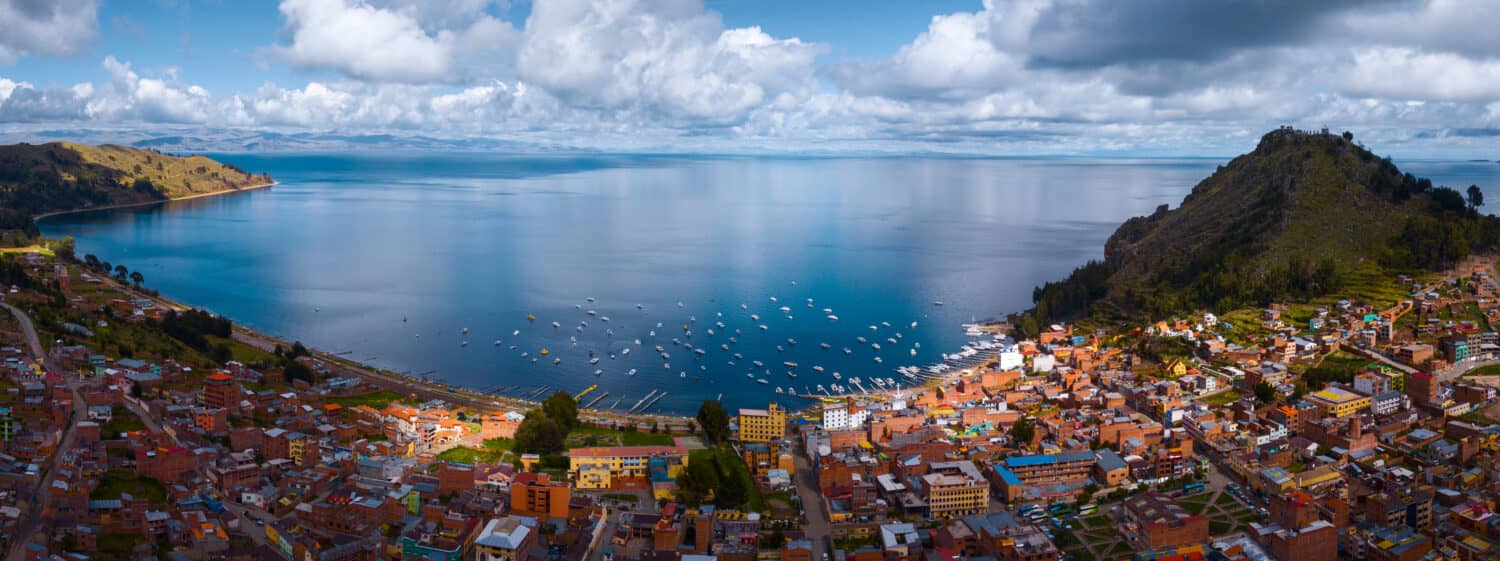Lake Titicaca is a massive freshwater lake in South America. In fact, it is the largest lake in South America and is also one of the 20 largest lakes in the world by surface area. This is the highest navigable lake in the world at an elevation of 3,810 meters (12,507 feet) above sea level. There is so much incredible information about this massive freshwater lake, and we’re going to explore a little deeper than the surface as we take a look at Lake Titicaca and compare it to other massive lakes around the world. First off, just how big is Lake Titicaca?
How Big is Lake Titicaca?

A photo of Lake Titicaca overlooking one of its islands – Isla del Sol (Island of the Sun) – in Bolivia.
©iStock.com/StreetFlash
Lake Titicaca is the largest freshwater lake in South America. It is the second largest lake in all of South America, following Lake Maracaibo, which is a brackish and freshwater lake (or tidal bay) in Venezuela. Lake Titicaca has an overall surface area of 3,232 square miles. The shoreline is vast and stretches 699 miles. The lake has an average depth of between 460 and 600 feet and a maximum depth of 922 feet. The lake extends 120 miles in a northwest-to-southeast direction. At its widest point, the lake reaches 50 miles across.
Lake Titicaca Compared to Other Freshwater Lakes

An image of Lake Baikal in Russia. This is one of the largest freshwater lakes in the world and dwarfs the size and depth of Lake Titicaca vastly.
©Nikitin Victor/Shutterstock.com
Now, let’s compare that to other huge freshwater lakes in the world, starting with the largest. First, we have to make our measurements clear. Lakes are measured in a variety of ways, including depth, the amount of water they contain, and their surface area. A great example is Lake Baikal in Russia. This lake is the deepest lake in the entire world at a maximum depth of 5,371 feet. It also contains the largest volume of freshwater in a lake in the entire world. However, based on surface area, it is only the seventh-largest in the world, falling behind lakes such as Lake Tanganyika in Africa.
We’ve included a helpful table that will show you some of the other massive freshwater lakes in the world and state their surface area, depth, and shoreline. Lake Titicaca will be included in this table. The lakes are not listed in order of size, but we have put the largest measurement in each category in bold. You can see that Lake Victoria has the longest shoreline of any of the listed lakes but has the second-smallest maximum depth. This is a good example of how different measurements of largeness create different results.
| Lake | Location | Surface Area | Maximum Depth | Shoreline |
|---|---|---|---|---|
| Lake Superior | United States, Canada | 31,700 square miles | 1,332 feet | 1,826 miles |
| Lake Victoria | Tanzania, Uganda, Kenya | 23,140 square miles | 266 feet | 2,000 miles |
| Lake Baikal | Russia | 12,248 square miles | 5,387 feet | 1,300 miles |
| Lake Tanganyika | Tanzania, Democratic Republic of the Congo, Burundi, Zambia | 12,700 square miles | 4,823 feet | 1,136 miles |
| Lake Titicaca | Peru, Bolivia | 3,232 square miles | 922 feet | 699 miles |
| Lake Vostok | Antarctica | 4,800 square miles | 3,000 feet | Not available |
| Lake Winnipeg | Canada | 9,465 square miles | 118 feet | 1,087 miles |
You may also notice that Lake Vostok has no shoreline length available. That’s because this lake is a subglacial lake. It’s hard to get a reading of shoreline length when you can’t access the shore.
Is Lake Titicaca the Oldest Lake in the World?
20 present-day lakes make up a list of “ancient lakes”. These lakes are older than all other lakes that exist today and have seen the world change around them drastically. Ancient lakes are lakes that have carried water in them for one million or more years. 12 of these 20 lakes have held water for more than 2.6 million years. To get an idea of how astounding this is, consider this: Most present-day lakes are 18,000 years old or less. Lake Superior was formed only 10,000 years ago and the lake as we know it today has only been around for about 4,000 years.
Lake Titicaca is one of the 20 ancient lakes of the world. According to Discover Peru, the creation of the lake dates back 60 million years to a massive earthquake that occurred during the Pre-Ice Age. However, other sources only date the existence of the lake itself to about three million years ago. Latin American and Caribbean Geographic lists the lake as three million years old. That’s still an impressively long time. Lake Baikal, for comparison, is thought to be over 25 million years old.
Ancient lakes are fascinating for a variety of reasons. In Lake Titicaca, the limited drainage of the lake allows scientists to create climate records in South America that date back 25,000 years. What does limited drainage have to do with this? Without a large drainage, the lake has collected thousands of years of fossil sediment, which can be used to track climate change and other history. Can you believe how much information we can get from this sediment? It creates a longer historical record than some of our records of early human civilization. One example of this is in Iraq. The world’s oldest known man-made bridge rests in Iraq and is only 4,500 years old. The very first known museum in the world was the creation of an Iraqi princess – over 3,000 years ago. Lake Titicaca’s fossil sediment shows us history far predating these wonders.
Are There Seahorses in Lake Titicaca?

The Titicaca water frog only exists in Lake Titicaca and the waters that flow into it.
©Andreas Wolochow/Shutterstock.com
One of the most common rumors about this incredible lake is that freshwater seahorses live in its depths. Is it true that freshwater seahorses exist and can be found in Lake Titicaca? Well, yes and no. The rumor has been greatly blown out of proportion and even used to justify some Creationist ideas. Yes, one of the world’s oldest lakes is home to creationist rumors. Let’s move past this scientific irony and answer the real question.
Lake Titicaca did once contain freshwater seahorses. Unfortunately, no one has spotted one for several decades. There is currently no evidence that seahorses still live in Lake Titicaca and this adorable animal is now more cryptid than critter. However, 540 or more other aquatic and amphibious species do still swim in its depths. This includes the incredibly rare (and severely endangered) Titicaca water frog (Telmatobius culeus), which can only be found in Lake Titicaca and the rivers that flow into it.
Is Lake Titicaca Drying Up?

Locals rely on the freshwater of Lake Titicaca for agriculture, fishing, tourism, commercial endeavors, and drinking.
©NiarKrad/Shutterstock.com
Unfortunately, this wondrous lake faces potential future peril – as do the communities that surround it. Water levels across the lake are 12 feet lower than they were in 1986, and it is estimated that the lake is losing around 120 million metric tons of water every year. This estimate is based on a study that examined satellite images of the lake from 1992-2020. According to a 2023 CNN report by Jack Guy and Claudia Rebaza, the changes in the lake are becoming extreme. Sixto Flores, one of the directors of Peru’s national meteorology and hydrology service gave CNN reporters the estimate that there was 49 percent less precipitation in the area than average from August 2022 to March 2023.
Even more, unfortunately, the lake isn’t alone in its drought. Most of the great lakes across the world are facing similar issues, many of them due to climate change. Long droughts and extended periods of heat-induced evaporation are drying up several rivers and lakes across the world.
This threatens the local way of life for residents around these lakes and rivers. Most major cities and civilizations have been erected next to fresh water, including the ancient civilization of Cahokia in the Illinois Valley. At lakes like Titicaca, the local residents – people and animals alike – rely on this water for drinking, commercial trade, fishing, and agriculture. Local tourism, which brings much-needed economy to the area, has decreased with the water levels.
Climate change has a deep and lasting impact on everyone in the world. Without access to fresh water, we cannot survive. The world’s leaders in clean water protection are struggling to find a solution before there isn’t one.
Thank you for reading! Have some feedback for us? Contact the AZ Animals editorial team.








